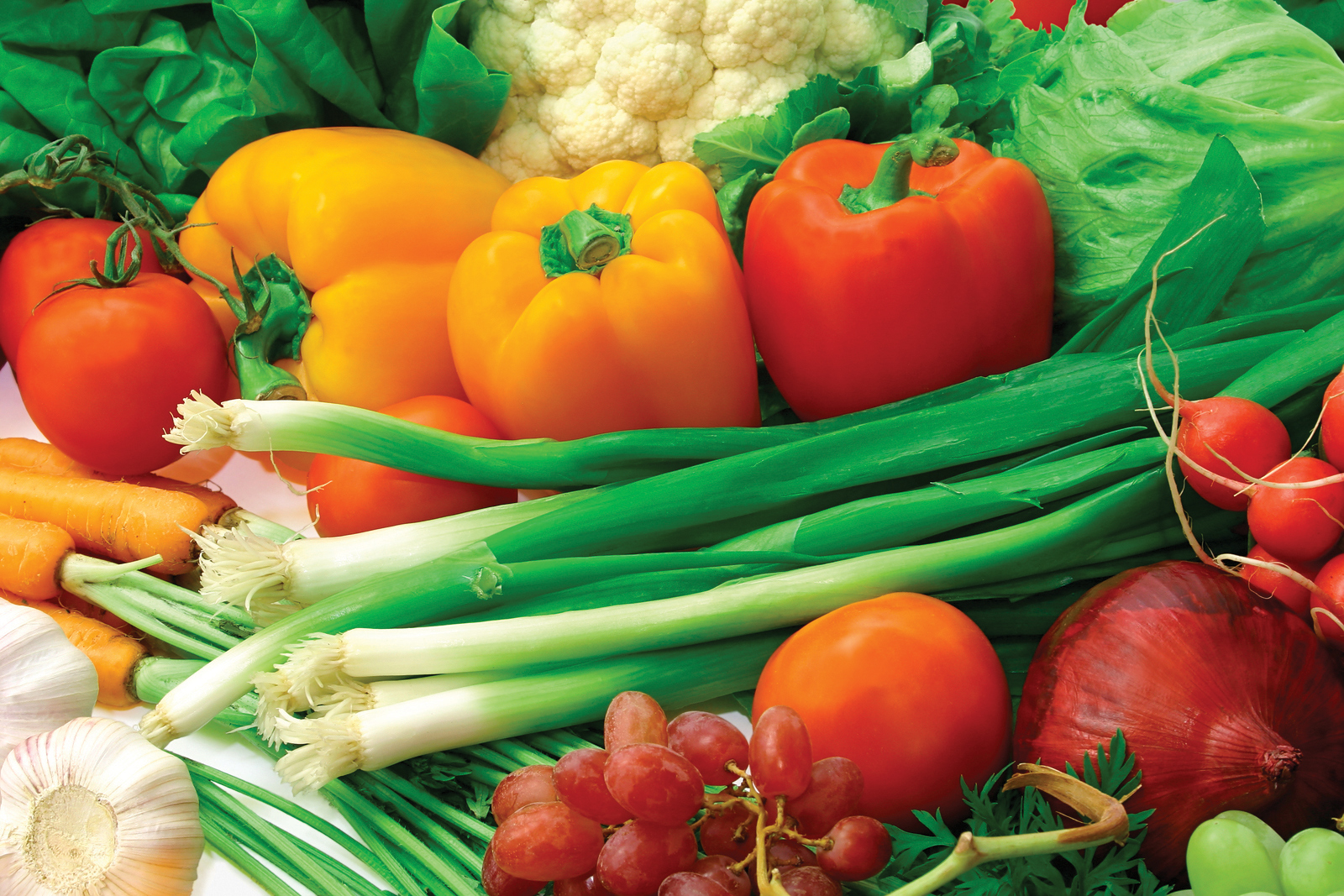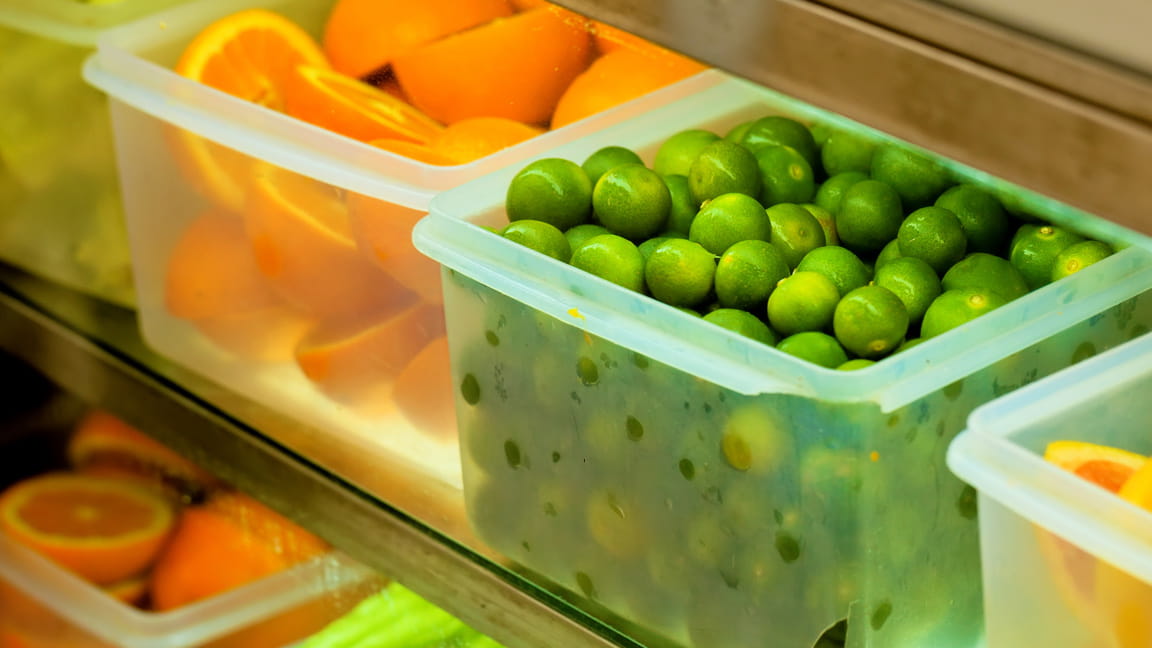What is the best way to store harvested vegetables?2024
DATE : 7 February 2024 By : Tareq Qteshat

Table of Contents
ToggleWhat is the best way to store harvested vegetables?2024

Storing harvested vegetables properly is essential to maintain their freshness and quality. As a home gardener, I know the satisfaction that comes from harvesting a bountiful crop from my own backyard. However, it’s important to have a plan for storing and preserving these vegetables to ensure they last for months out of season.
In this article, I will explore different methods for storing vegetables, including root cellar storage, refrigerator storage, vacuum sealing and freezing, and canning and pickling. Each method has its own advantages and considerations, and it’s important to choose the one that best suits your needs and the specific vegetables you have harvested.
By properly storing vegetables, you can enjoy the optimal flavor and nutritional value of homegrown produce all year round. So let’s dive in and discover the best ways to store harvested vegetables to avoid spoilage and maintain their quality for an extended period of time.
Benefits of proper vegetable storage
Proper vegetable storage offers a multitude of benefits for home gardeners like myself. By storing harvested vegetables correctly, I can enjoy the fruits of my labor all year round, even during months out of season. Here are some of the key benefits of proper vegetable storage:
- Extended Shelf Life: Proper storage techniques allow vegetables to stay fresh and maintain their quality for a longer period of time, reducing spoilage and waste.
- Nutritional Value: By storing vegetables correctly, I can preserve their nutritional value, ensuring that my family gets all the essential vitamins and minerals.
- Cost Savings: Storing vegetables properly helps me make the most out of my harvest, reducing the need to buy fresh produce at higher prices during the off-season.
- Flavor Preservation: By preserving optimal flavor, stored vegetables add rich taste and texture to my meals, allowing me to enjoy the taste of homegrown produce year-round.
- Convenience: Having a well-stocked homegrown pantry at my disposal means I can easily access a variety of vegetables whenever I need them, simplifying meal planning and preparation.
By implementing proper vegetable storage methods, I can reap these benefits and enjoy the taste, nutrition, and convenience of my homegrown harvest throughout the year.
Factors affecting vegetable storage

Several key factors can impact the storage of harvested vegetables. First, the quality of the vegetables at the time of harvest plays a crucial role. It is important to choose vegetables that are at their peak ripeness, as under-ripe or over-ripe vegetables may not store well.
Temperature and humidity are also significant factors. Most vegetables benefit from being stored in cool and dry conditions. Leafy greens, for example, prefer cooler temperatures, while root vegetables like carrots and potatoes prefer slightly warmer temperatures.
Proper ventilation is essential to prevent the buildup of moisture, which can lead to spoilage. Plastic bags or containers with ventilation holes can help maintain the ideal humidity levels.
Lastly, proper handling during harvest and storage is crucial. Rough handling can damage vegetables and increase the risk of spoilage. Removing any damaged or spoiled vegetables immediately helps prevent the spread of rot. By considering these factors, we can ensure the highest quality and longest shelf life for our harvested vegetables.
Root Cellar Storage
:max_bytes(150000):strip_icc()/storing-vegetables-for-winter-1403357-hero-e1c8b681dbe3428f847d54c8ec10c979.jpg)
Root cellar storage is a traditional method that provides an ideal environment for storing harvested vegetables. I have found root cellars to be incredibly effective in keeping my vegetables fresh and crisp for months out of season. The cool and moist conditions are perfect for root vegetables like carrots, potatoes, beets, onions, garlic, and shallots, as well as other vegetables like pumpkins, zucchini, butternut squash, and spaghetti squash.
Creating a root cellar doesn’t require much space or specialized equipment. I have simply converted a corner of my basement into a root cellar by insulating the walls and floor to maintain a consistent temperature. I use crates or shelves to organize the vegetables and ensure proper air circulation. Plastic bags can be used for potatoes and onions, while leafy greens can be stored in baskets or breathable containers. I also periodically check for any signs of spoilage and remove any damaged vegetables to prevent further decay.
Overall, root cellar storage is a reliable and low-maintenance method to preserve the quality and flavor of homegrown vegetables throughout the year.
Advantages of root cellars
One of the biggest advantages of using root cellars for vegetable storage is the ability to keep vegetables fresh for months out of season. The cool and moist conditions inside a root cellar provide the perfect environment for root vegetables like carrots, potatoes, beets, onions, garlic, and shallots, as well as other vegetables like pumpkins, zucchini, butternut squash, and spaghetti squash.
Another advantage of root cellars is that they require minimal space and specialized equipment. I have converted a corner of my basement into a root cellar by insulating the walls and floor to maintain a consistent temperature. This allows me to store a large quantity of vegetables without taking up extra room in my home.
Root cellars also provide a natural and sustainable method of preserving vegetables. By using this traditional method, I can avoid relying on electricity or refrigeration to store my homegrown produce. Additionally, the flavors of the vegetables are enhanced and preserved in a root cellar, ensuring that I can enjoy the bounty of my garden throughout the year.
Tips for creating a root cellar

When creating a root cellar, there are a few key tips to keep in mind. First, choose a location that is cool and dry, with a temperature range between 32°F and 45°F (0°C to 7°C) and a humidity level of around 90%. This will help create the ideal conditions for vegetable storage.
Next, insulate the walls and floor of the cellar to maintain a consistent temperature. This can be done using materials such as straw, hay, or even soil.
Ensure proper ventilation by adding a vent or window to allow air circulation. This will help prevent mold and mildew from developing.
Use shelves or racks to store your vegetables, keeping them off the ground to avoid moisture build-up.
Lastly, regularly check on your stored vegetables to remove any that show signs of spoilage. This will help maintain the overall quality of your stored produce.
By following these tips, you can create a successful root cellar and enjoy the benefits of fresh vegetables throughout the year.
Refrigerator Storage

Refrigerator storage is another convenient method for preserving harvested vegetables. The refrigerator provides a controlled environment that helps maintain the freshness and quality of the vegetables.
To store vegetables in the refrigerator, it is important to store them in perforated plastic bags or containers to allow for proper airflow and prevent moisture buildup. This helps prevent spoilage and keeps the vegetables crisp. Additionally, it is important to wrap leafy greens in a paper towel to absorb excess moisture, which can cause wilting.
The recommended temperature for vegetable storage in the refrigerator is between 32°F and 40°F (0°C to 4°C), with a humidity level of 90% to 95%. This helps slow down the rate of ripening and decay, ensuring longer shelf life for the vegetables.
However, it is important to note that not all vegetables should be refrigerated. Some vegetables, like tomatoes and potatoes, can lose their flavor and texture when refrigerated. It is best to research individual vegetables to determine the most appropriate storage method.
Overall, refrigerator storage can be a convenient way to prolong the shelf life of harvested vegetables and preserve their quality.
Benefits of refrigeration for vegetable storage

Refrigeration is a convenient and effective method for storing harvested vegetables. It helps to maintain the freshness and quality of the vegetables, extending their shelf life.
One of the main benefits of refrigeration is that it helps slow down the rate of ripening and decay. The controlled temperature between 32°F and 40°F (0°C to 4°C) creates an environment that preserves the vegetables for longer periods.
Refrigeration also helps to retain the nutritional value of the vegetables. The cool temperature helps to slow down the breakdown of vitamins and minerals, ensuring that the vegetables remain nutritious even after storage.
Another advantage of refrigeration is that it prevents the growth of bacteria and fungi, which can cause spoilage and reduce the quality of the vegetables. The cold temperature inhibits the growth of microorganisms, keeping the vegetables fresh and safe to eat.
Overall, refrigeration is a convenient and effective way to store harvested vegetables. It helps preserve their freshness, nutritional value, and quality, allowing us to enjoy homegrown vegetables for months out of season.
Recommended temperature and humidity levels

When it comes to refrigeration for vegetable storage, it is important to maintain the right temperature and humidity levels. The recommended temperature for storing most vegetables is between 32°F and 40°F (0°C to 4°C). This cool temperature helps to slow down the rate of ripening and decay, preserving the vegetables for a longer period. It is also important to maintain a humidity level of around 85-95% to prevent moisture loss and keep the vegetables hydrated.
To ensure optimal storage conditions, place the vegetables in plastic bags with some ventilation to allow for air circulation. It is also a good idea to separate fruits and vegetables, as fruits release ethylene gas which can speed up the ripening process of vegetables. By following these recommended temperature and humidity levels, you can extend the shelf life of your vegetables and enjoy their freshness for months out of the growing season.
Vacuum Sealing and Freezing
.jpg)
Vacuum sealing is an excellent method for preserving the freshness and quality of harvested vegetables. It involves removing air from the packaging to create a tight seal, preventing the growth of bacteria and reducing the risk of freezer burn. By vacuum sealing and freezing vegetables, you can enjoy their garden-fresh taste months out of the growing season.
To properly vacuum seal vegetables, first blanch them by briefly immersing them in boiling water, then plunging them into ice water to retain their texture and color. Once blanched, pat the vegetables dry and place them in vacuum-sealed bags or containers. Remove as much air as possible before sealing to maintain optimal flavor and texture.
When freezing vacuum-sealed vegetables, ensure they are arranged in a single layer to allow for even freezing. Once frozen, they can be stacked for storage efficiency. Remember to label and date the packages for easy identification.
Vacuum sealing and freezing is a convenient method for preserving your garden harvest. It helps maintain the nutritional value and flavor of your vegetables, ensuring they remain fresh and ready to use whenever you need them.
How vacuum sealing preserves vegetables

Vacuum sealing is a highly effective method for preserving the freshness and quality of harvested vegetables. By removing the air from the packaging, vacuum sealing creates a tight seal that prevents the growth of bacteria and reduces the risk of freezer burn. This process helps to maintain the optimal flavor and texture of the vegetables.
When vegetables are vacuum sealed, the lack of oxygen slows down the enzymes that cause spoilage, ensuring that the vegetables stay fresh for a longer period of time. Additionally, the absence of air prevents moisture from accumulating, which further prevents the growth of bacteria and molds.
Vacuum sealing also protects vegetables from freezer burn by eliminating contact with oxygen and reducing the risk of moisture loss. Freezer burn can lead to a loss of flavor and texture in vegetables, but vacuum sealing prevents this by creating a protective barrier.
Overall, vacuum sealing is an excellent method for preserving your garden harvest, allowing you to enjoy the taste of fresh vegetables months out of the growing season.
Steps to properly freeze vegetables

The process of freezing vegetables allows me to enjoy the taste of fresh produce months after the harvest. Here are the steps I follow to properly freeze vegetables:
- Prep the vegetables: Wash and dry the vegetables thoroughly. Remove any stems, seeds, or skins as necessary.
- Blanch the vegetables: Blanching helps to preserve the color, texture, and nutritional value of the vegetables. Bring a large pot of water to a boil and blanch the vegetables for a short period of time, usually 1-3 minutes.
- Cool and dry: After blanching, quickly transfer the vegetables to an ice bath to stop the cooking process. Once cooled, drain the vegetables and pat them dry with a clean towel or paper towels.
- Pack and seal: Place the blanched and dried vegetables into freezer-safe containers or bags. Remove as much air as possible to prevent freezer burn and seal tightly.
- Label and freeze: Clearly label each container or bag with the contents and the date. Place the vegetables in the freezer and make sure they are stored in a single layer until frozen solid.
By following these steps, I can preserve the quality and flavor of my homegrown vegetables for several months.
Canning and Pickling

Canning and pickling are two popular methods for preserving harvested vegetables. Canning involves packing vegetables into jars and sealing them to create an airtight environment. This helps to prevent spoilage and allows the vegetables to be stored for long periods of time. Pickling, on the other hand, involves immersing vegetables in a solution of vinegar, salt, and spices. This acidic environment inhibits the growth of bacteria and prolongs the shelf life of the vegetables.
Both canning and pickling offer numerous benefits. They allow me to enjoy the flavors of my homegrown vegetables year-round, even when they are out of season. Additionally, they provide a creative way to use surplus vegetables and reduce waste. I can experiment with different pickling recipes and create unique flavors that add a zesty tang to my meals.
It’s important to note that canning and pickling require proper equipment and techniques to ensure safety. Following established recipes and guidelines is essential to prevent the growth of harmful bacteria. With the right tools and precautions, canning and pickling are excellent methods to extend the life of my harvest and savor the taste of my hard work.
Overview of canning and pickling methods

Canning and pickling are two popular methods for preserving harvested vegetables. Canning involves packing vegetables into jars and sealing them to create an airtight environment. This helps to prevent spoilage and allows the vegetables to be stored for long periods of time. Pickling, on the other hand, involves immersing vegetables in a solution of vinegar, salt, and spices. This acidic environment inhibits the growth of bacteria and prolongs the shelf life of the vegetables.
Both canning and pickling offer numerous benefits. They allow me to enjoy the flavors of my homegrown vegetables year-round, even when they are out of season. Additionally, they provide a creative way to use surplus vegetables and reduce waste. I can experiment with different pickling recipes and create unique flavors that add a zesty tang to my meals.
It’s important to note that canning and pickling require proper equipment and techniques to ensure safety. Following established recipes and guidelines is essential to prevent the growth of harmful bacteria. With the right tools and precautions, canning and pickling are excellent methods to extend the life of my harvest and savor the taste of my hard work.
Benefits and considerations of canning and pickling

Canning and pickling are excellent methods for preserving harvested vegetables. One of the main benefits is that they allow me to enjoy the flavors of my homegrown vegetables months out of season. Canning and pickling also provide a creative way to use surplus vegetables and reduce waste. I can experiment with different pickling recipes and create unique flavors that add a zesty tang to my meals.
Another advantage of canning and pickling is their long shelf life. When properly sealed, canned vegetables can last up to a year or more, while pickled vegetables can be kept for several months. This allows me to build a well-stocked homegrown pantry and enjoy my harvest for an extended period.
However, it is important to consider a few factors when canning and pickling. Proper equipment and techniques are crucial to ensure safety and prevent spoilage. Following established recipes and guidelines is essential to prevent the growth of harmful bacteria.
Overall, canning and pickling are wonderful methods to extend the life of my harvest and savor the taste of my hard work.
Conclusion

In conclusion, properly storing harvested vegetables is essential for preserving their freshness and maximizing their shelf life. Whether using a root cellar, refrigerator, or freezer, maintaining optimal temperature, humidity, and storage conditions is crucial. By following these best practices, I can enjoy the delicious taste of my homegrown vegetables for months after the harvest.
A root cellar offers a traditional and effective method for storing root vegetables, leafy greens, and winter squash. By creating a cool and dry environment with proper ventilation, I can extend the shelf life of these crops and enjoy them well into the winter months.
Refrigerator storage is ideal for short-term vegetable storage, especially for leafy greens and other delicate produce. By adjusting the temperature and humidity levels and using plastic bags to maintain freshness, I can ensure that my vegetables remain crisp and vibrant.
Vacuum sealing and freezing are great options for long-term preservation. By properly packaging and freezing vegetables, I can enjoy their nutritional value and taste even after several months.
Overall, by implementing these storage methods, I can make the most of my garden harvest, reducing waste, and ensuring that my homegrown vegetables maintain their quality and flavor throughout the year.
Best practices for storing harvested vegetables

When it comes to storing harvested vegetables, there are a few key practices that I always follow to ensure the best quality and longevity of my produce. Firstly, I make sure to handle the vegetables with care to avoid any bruising or damage that can lead to spoilage. I also clean them thoroughly before storage to remove any dirt or debris that can contribute to decay.
Next, I choose the appropriate storage method based on the type of vegetable. Root vegetables like carrots, potatoes, and beets are best stored in a cool, dark, and well-ventilated place such as a root cellar or basement. Leafy greens, on the other hand, are more delicate and should be stored in sealed plastic bags or containers in the refrigerator.
I also pay attention to temperature and humidity levels, ensuring that they are optimal for each type of vegetable. For example, tomatoes and peppers prefer slightly warmer temperatures, while leafy greens thrive in cooler conditions.
Lastly, I regularly check and remove any spoiled or rotting vegetables to prevent them from affecting other produce. By following these best practices, I can enjoy the delicious taste and nutritional value of my homegrown vegetables for months out of season.
Tips for maintaining vegetable freshness

To ensure the freshness and quality of your harvested vegetables, there are a few key tips that I always follow. Firstly, it is important to handle the vegetables with care to avoid bruising or damage. This includes using gentle handling techniques and storing them in appropriate containers.
Secondly, it is crucial to keep the vegetables at the optimal temperature and humidity levels. This means storing leafy greens and delicate vegetables in the refrigerator, while root vegetables can be stored in a cool and dark place like a root cellar or basement.
Additionally, regular inspection and removal of any spoiled or rotting vegetables is essential to prevent them from affecting the rest of the produce.
Lastly, blanching and freezing certain vegetables can help to preserve their freshness and extend their shelf life. This process involves briefly boiling the vegetables and then quickly cooling them in ice water before freezing.
By following these simple tips, you can maintain the freshness and flavor of your homegrown vegetables for longer periods of time.
Tags: easiest vegetables to grow at home, fresh vegetables, growing vegetables, harvesting vegetables, how to grow vegetables at home, how to grow vegetables indoors, how to regrow store bought vegetables & herbs, how to store vegetables, how to store vegetables for long time, how to store vegetables in fridge, how to wash and store vegetables, store vegetables, storing vegetables, storing vegetables long term, vegetables, when to harvest vegetables







0 thoughts on “What is the best way to store harvested vegetables?2024”